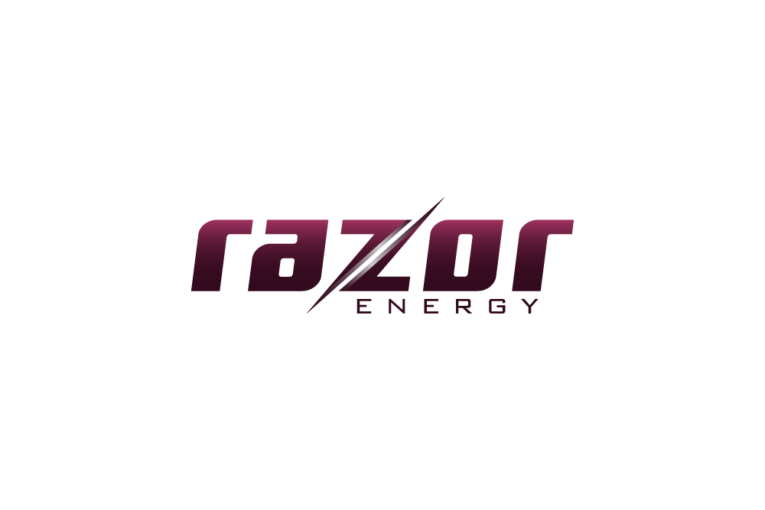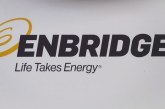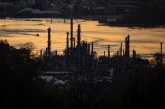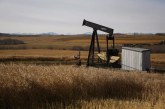
[ad_1]
CALGARY, Alberta – Razor Energy Corp. (“Razor” or the “Company”) (TSXV: RZE) announces its second quarter 2022 financial and operating results. Selected financial and operational information is outlined below and should be read in conjunction with Razor’s unaudited interim condensed consolidated financial statements and management’s discussion and analysis for the three and six months ended June 30, 2022 which are available on SEDAR at www.sedar.com and the Company’s website www.razor-energy.com.
All amounts are expressed in Canadian dollars. Certain metrics, including those expressed on an adjusted basis, are non-IFRS and other financial measures. See “Non-IFRS and Other Financial Measures” below.
RECENT HIGHLIGHTS
- Increased Production: Completed work on a group pipeline and associated wells in the Swan Hills area and in mid-August which, in conjunction with other activities, increased field estimated production to over 4,900 boe/d.
- Geothermal Project: FutEra Power Corp. (“FutEra”), a subsidiary of Razor entered the final construction stage of its Co-produced Geothermal Power Generation Project in Swan Hills, Alberta (“Geothermal Project”). The Geothermal Project will be capable of generating up to 21 MW of grid connected electricity, of which up to 30% will be sustainable clean power generation.
- CO2 Enhanced Oil Recovery: Razor recently engaged Sproule Associates Limited to review the results of the CO2 enhanced oil recovery (“EOR”) pilot in Razor’s South Swan Hills Unit (“SSHU”).
Q2 2022 FINANCIAL AND OPERATIONAL HIGHLIGHTS
- Production: Averaged 4,340 boe/d in Q2 2022, representing a 38% increase from Q1 2021 and averaged 4,398 boe/d for the six months ended June 30, 2022, an increase of 43% compared to the same period in 2021.
- Adjusted Funds Flow1: Generated adjusted funds flow of $6.0 million ($0.25/share (basic and diluted)) in Q2 2022, representing an increase of $5.4 million from Q2 2021 driven by improved operating netbacks and higher production.
- Operating Netback1: Achieved an operating netback of $24.90/boe in Q2 2022, compared to $5.20/boe in Q2 2021.
1) Refer to “Non-IFRS and other financial measures.”
NEAR AND MEDIUM-TERM OBJECTIVES
- Safely execute our production enhancement programs and commission the Geothermal Project.
- Reduce net debt through a measured investment in production enhancement while continuing to optimize operational and administrative costs.
- Actively identify and consider asset acquisitions and business combinations with other oil and gas producers, energy related service companies, and lower carbon electricity producers and technologies.
SELECT QUARTERLY HIGHLIGHTS
The following tables summarizes key financial and operating highlights associated with the Company’s financial performance.
| Three Months Ended |
Six Months Ended |
||||||||||||
| June 30 |
June 30 |
||||||||||||
| ($000s, except for per share amounts and production) | 2022 | 2021 | % Change | 2022 | 2021 | % Change | |||||||
| Production | |||||||||||||
| Light oil (bbl/d) | 2,619 | 1,983 | 32 | 2,724 | 1,968 | 38 | |||||||
| Natural gas (mcf/d)1 | 4,907 | 3,673 | 34 | 4,630 | 3,707 | 25 | |||||||
| NGLs (boe/d) | 904 | 549 | 65 | 903 | 492 | 84 | |||||||
| Total (boe/d) | 4,340 | 3,145 | 38 | 4,398 | 3,077 | 43 | |||||||
| Sales Volumes | |||||||||||||
| Light oil (bbl/d) | 2,597 | 2,010 | 29 | 2,736 | 1,959 | 40 | |||||||
| Natural gas (mcf/d)1 | 4,514 | 3,301 | 37 | 4,211 | 3,382 | 25 | |||||||
| NGLs (boe/d) | 904 | 549 | 65 | 903 | 492 | 84 | |||||||
| Total (boe/d) | 4,253 | 3,110 | 37 | 4,340 | 3,014 | 44 | |||||||
| Oil inventory volumes (bbls) | 13,009 | 9,784 | 33 | 13,009 | 9,784 | 33 | |||||||
| Financial | |||||||||||||
| Oil and NGL sales | 36,624 | 15,320 | 139 | 69,548 | 27,813 | 150 | |||||||
| Natural gas sales | 3,242 | 940 | 245 | 4,952 | 1,831 | 170 | |||||||
| Blending and processing income | 916 | 776 | 18 | 1,819 | 2,144 | (15 | ) | ||||||
| Other revenue | 521 | 149 | 250 | 1,003 | 552 | 86 | |||||||
| Total Revenue | 41,303 | 17,185 | 140 | 77,322 | 32,340 | 139 | |||||||
| Cash flow from operating activities | 1,315 | 403 | 226 | 3,719 | (3,119 | ) | (219 | ) | |||||
| Funds flow2 | 5,866 | 362 | 1,520 | 15,749 | (1,060 | ) | (1,586 | ) | |||||
| Adjusted funds flow2 | 6,047 | 601 | 906 | 15,708 | (260 | ) | (6,142 | ) | |||||
| Net loss | (2,278 | ) | (5,544 | ) | (59 | ) | (3,054 | ) | (11,179 | ) | (73 | ) | |
| Per share – basic and diluted | (0.09 | ) | (0.26 | ) | (65 | ) | (0.13 | ) | (0.53 | ) | (75 | ) | |
| Weighted average number of shares outstanding | 24,392 | 21,064 | 16 | 23,856 | 21,064 | 13 | |||||||
| Total number of shares outstanding | 25,275 | 21,064 | 20 | 25,275 | 21,064 | 20 | |||||||
| Total Assets | 197,980 | 155,385 | 27 | 197,980 | 155,385 | 27 | |||||||
| Cash | 2,971 | 2,710 | 10 | 2,971 | 2,710 | 10 | |||||||
| Long-term debt (principal) | 82,718 | 62,678 | 32 | 82,718 | 62,678 | 32 | |||||||
| Net debt2 | 99,617 | 83,260 | 20 | 99,617 | 83,260 | 20 | |||||||
| Netback ($/boe)2 | |||||||||||||
| Oil and gas sales | 100.94 | 56.81 | 78 | 93.59 | 53.22 | 76 | |||||||
| Royalties | (25.93 | ) | (7.66 | ) | 238 | (22.45 | ) | (6.20 | ) | 262 | |||
| Adjusted net operating expenses2 3 | (37.88 | ) | (36.79 | ) | 3 | (35.42 | ) | (35.09 | ) | 1 | |||
| Production enhancement expenses2 | (8.45 | ) | (4.94 | ) | 71 | (7.97 | ) | (6.41 | ) | 24 | |||
| Transportation and treating | (2.52 | ) | (2.04 | ) | 24 | (2.45 | ) | (2.19 | ) | 12 | |||
| Realized gain (loss) on commodity contracts | (1.26 | ) | (0.18 | ) | 600 | 0.17 | (0.09 | ) | (289 | ) | |||
| Operating Netback2 | 24.90 | 5.20 | 379 | 25.47 | 3.24 | 686 | |||||||
| 1) Natural gas production includes internally consumed natural gas primarily used in power generation. 2) See “Non-IFRS and other financial measures” 3) Excludes production enhancement expenses incurred in the period. |
|||||||||||||
SECOND QUARTER OPERATIONAL UPDATE
Production volumes in Q2 2022 averaged 4,340 boe/d, an increase of 37% from Q2 2021 volumes of 3,145 boe/d and represents a 3% decrease from Q1 2022 of 4,457 boe/d. Production volumes averaged 4,340 boe/d for the six months ended June 30, 2022, an increase of 44% from the same period in the prior year. Highlights of the causes for the differences in production volumes as compared to Q1 2022 are as follows:
- Swan Hills – production volumes increased 38% from the same period of 2021. Production in Q2 2022 was negatively impacted by decreased production of approximately 500 boe/d as a result of a non-operated partner reclaiming their working interest in certain properties. This decrease was partially offset by the Company beginning a production enhancement program in Swan Hills in Q2 2022, which has increased production by approximately 29 boe/d in Q2 2022 as compared to Q1 2022. In addition, the operator in Swan Hills Unit No.1 has embarked on various production enhancement activities and the Company anticipates production enhancement activities to continue throughout 2022.
- Kaybob – production volumes increased 41% from the same period in 2021 as the Company’s production enhancement program was focused in the Kaybob area in Q1 2022 increasing production by 125 boe/d in Q2 2022 as compared to the prior quarter.
- Southern Alberta – production volumes increased 26% from the same period in 2021 as the result of the Company’s production enhancement program positively impacting volumes for Q2 2022, increasing production 14 boe/d as compared to Q1 2022.
The increase in production volumes for both the three and six months ended June 30, 2022 as compared to the three and six months ended June 30, 2021 is largely due to production enhancement activities increased production 168 boe/d in Q2 2022 and 304 boe/d for the six months ended June 30, 2022 offset by various third party operational downtime, temporary infrastructure issues and reclaimed working interest by a non-operated partner as discussed above.
Adjusted net operating expenses increased $4.7 million or 44% on a total dollar basis and increased 3% on a per boe basis in Q2 2022 compared to the same period in 2021. The increase in the adjusted net operating expense on a total dollar basis was due primarily to fuel and electricity costs which increased $2.3 million in Q2 2022 as compared to Q2 2021, downhole service which increased $1.6 million in Q2 2022 as compared to Q2 2021, surface repairs and maintenance costs increased $0.9 million in Q2 2022 as compared to Q2 2021 and labour costs which increased $0.8 million in Q2 2022 as compared to Q1 2021. Adjusted net operating expenses on a per boe basis in Q2 2022 were consistent with Q2 2021.
The primary factors affecting operating costs on a $/boe basis are production levels, workover activity and electricity pricing. Inherent within the Company’s hydrocarbon operations is a prominent fixed cost element, or those costs that are not correlated to production levels. On a relative basis these costs are higher with lower production. Razor’s reactivation program continued during Q2 2022 and will extend into 2022/2023 with the majority of the costs being expensed. Furthermore, the electricity market has seen a continual rise in prices.
CAPITAL EXPENDITURES
Total capital expenditures, before grant proceeds was $9.4 million in Q2 2022 and $14.8 million for the six months ended June 30, 2022. For the six months ended June 30, 2022, Razor invested $13.1 million on its Geothermal Project.
CO2 ENHANCED OIL RECOVERY
Razor recently engaged Sproule Associates Limited to review the results of the CO2 EOR pilot in Razor’s SSHU. The CO2 pilot ran from June 2008 to August 2010 with 2 injectors and 6 oil producers. The review of the pilot project indicated the project appears to have resulted in incremental oil recovery of 4% in the pilot area from the lower reservoir layers with total CO2 injection during the pilot totaling approximately 7% of the original hydrocarbon pore volume in the flooded layers. Additional and continued CO2 injection should result in higher recoveries. It is expected the CO2 flood could be expanded to additional regions of SSHU in future years to increase overall unit recoveries.
Currently, Razor is evaluating local, pipelined supplies of CO2 as potential sources to possibly restart CO2 injection in the original CO2 pilot project region within the SSHU, which includes the possible use of emissions from FutEra’s soon to be completed Geothermal Project.
The overall objectives of reactivating the pilot project and expand thereafter are to economically reduce CO2 emissions and increase oil recovery in SSHU.
OUTLOOK
Razor
Razor continues to look forward with plans for the future while remaining focused on its mid to long-term sustainability. Razor recognizes multiple deep value streams in its assets and is actively engaged in liberating them for the benefit of shareholders. The Company has an extensive opportunity set of high-quality wells requiring reactivation, many of which have payout metrics which exceed the Company’s economic thresholds. Razor will continue production enhancement activity throughout 2022. Most activities involve repairs and maintenance work which will be expensed for accounting purposes and operating netbacks will be reduced during this timeframe. In aggregate, the annual base decline of these wells is anticipated to be consistent with the Company’s current corporate rate of approximately 12%.
The Company continues to focus on cost control on its operated properties. In addition to the planned production enhancement program, Razor will take a cautious and case-by-case approach to capital spending in 2022, focusing on low risk, capital efficient opportunities to increase field efficiencies and corporate netbacks.
The significant improvement in oil prices thus far in 2022 combined with a strong price outlook in the medium term, provides Razor with improved cash flow from operations and the Company anticipates reducing its net debt throughout 2022.
Razor has high reservoir quality, low decline, isolate carbonate Swan Hills reef light oil pools that contain large original oil in place with over 60 years of production history. Razor believes these reefs are ideally suited for carbon capture, utilization and storage and EOR purposes1, in addition to geothermal power production and conventional open-hole horizontal development drilling upside.
____________
1 These programs have been successfully demonstrated by the previous operator’s SSHU CO2 EOR Injection Pilot which ran from 2008 to 2010 in addition to CO2 injection programs carried out in the Swan Hills Unit No. 1 and Judy Creek oil pools from 2004 to 2010.
FutEra
In May 2021, FutEra, a subsidiary of Razor entered the project execution stage of its Geothermal Project. On March 9, 2022, FutEra announced that it is fully financed and in final construction of its 21 MW Geothermal Project, of which up to 30% will be sustainable clean power generation. FutEra has successfully partnered with provincial and federal government agencies to invigorate the emerging geothermal industry. To date, Razor has received $16.3 million in government grants to support this power generation project. The total construction and commissioning budget for the Geothermal Project is $43.0 million. The Project is in final construction with commissioning and startup will commence in the fall.
Legacy oil and gas fields can face economic challenges with lower production levels and high fixed costs. However, these fields also have practical advantages when considering the existing infrastructure, pipelines, wells, and operational footprints. The Geothermal Project is an example of leveraging existing assets to lower carbon economic outcomes. Razor and FutEra continue to demonstrate the synergies and cooperation needed to define a type of transformation energy and sets the standard of how oil and gas companies can evolve into the ‘energy and technology’ companies necessary for the future of the Alberta energy complex.
FutEra’s next phase of the Geothermal Project will be the design and implementation of a Carbon Capture with Usage and/or Sequestration (“CCUS”) solution, with the objective to create a net negative carbon emitting power generation facility. This initiative is currently under evaluation for technical feasibility and economic viability.
With Razor’s strategic acquisition of additional working interest in the Swan Hills area in the third quarter of 2021, FutEra has identified the potential for additional geothermal and/or natural gas power generation projects in Swan Hills Unit No.1. The volume and temperature of the produced fluids processed through two of the Unit’s main facilities are highly analogous to FutEra’s current Geothermal Project.
FutEra has identified and is in the process of reviewing and capturing additional projects including solar, geothermal, CCUS and other low carbon technologies. The long-term strategy of large scale power is also underway.
Continuing on the transition energy theme, on May 11, 2022 Razor closed a rights offering for $5.0 million of common shares issued on a flow-through basis in respect of Canadian renewable and conservation expense (“CRCE”) within the meaning of the Income Tax Act (Canada). The proceeds will be used to fund certain eligible expenses yet to be incurred on the Geothermal Project, solar and eligible expenses on various early stage power projects including additional geothermal initiatives in 2022 and 2023.
[ad_2]
You can read more of the news on source



